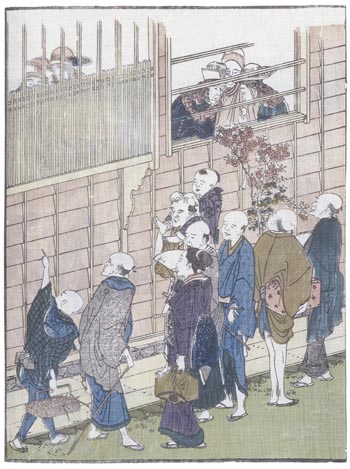By Pamela Toler (Regular Contributor)
In 1853 , Commodore Matthew Perry and his squadron of four “black ships of evil mien” opened Japanese ports to trade with the United States, a literal example of “gunboat diplomacy”. Most historically literate Americans are aware of Perry’s expedition in broad terms, even if they don’t know any of the details. Western accounts of Perry’s success treat it as a major step for both the United States and Japan’s development as modern powers, a triumph of modernity over traditional culture, a triumph of free trade over protectionism. Popular accounts of Japanese history treat it as the first step in the Meiji Restoration.
These accounts generally slide over the question of how, when, and why Japan was “closed”–itself an interesting episode in early east-west relationships.
As in India, the first Europeans to reach Japan were the Portuguese, who reached the islands by accident when a ship was blown off course in a storm in 1543. Soon Portuguese merchants were trading Western firearms and Chinese silk for Japanese copper and silver . At the same time, Portuguese and Spanish missionaries converted hundreds of thousands of Japanese, including at least six feudal lords, to a form of Catholicism that was filtered through Buddhist concepts.
The arrival of Europeans to Japan coincided with a period of political upheaval in Japan, known as the period of the Warring States. In 1600, the warlord Tokugawa Ieyasu defeated his rivals, using modern Western weapons such as cannon and muskets. He declared himself shogun, the first of the dynasty of Tokugawa shoguns who would rule in the name of puppet emperors for more than two hundred years.
Ieyasu immediately moved to consolidate his power. He disarmed the peasants and decreed that only members of the samurai warrior class would be allowed to carry swords. More important in terms of Japan’s relationship with the outside world, he ordered the country closed to Europeans. Christianity was outlawed and the missionaries were expelled. Tens of thousands of Japanese Christian converts were killed.* Trade with Europe was limited to the Dutch East India Company, which was allowed to dock once a year at the man-made and closely guarded island of Dejima in Nagasaki harbor. After 1639, no Japanese were permitted to go abroad, Japanese ships were forbidden to sail outside Japanese waters and any Japanese sailor caught working on a foreign ship was executed.
Closing the ports against “contamination” by Western ideas is often presented as evidence of Japanese backwardness. After all, the Japanese missed the Scientific Revolution, the Industrial Revolution, the Enlightenment, and the rise of the middle class. On the other hand, during much of the Tokugawa shogunate, Japan enjoyed a period of peace and order, secure from being taken over by Western powers. And as we’ll see in a future post, once the doors were open, Japan was quick to catch up.
*This was not a simple case of martyrdom, nor is it parallel to the Roman response to Christians. In 1637, Japanese peasants in Shimbara Peninsula rebelled against heavy taxation and abuses by local officials. Because most of the peasants in the region had converted, the Shimbara Rebellion soon took on Christian overtones. In one of the ironies with which history is rife, the Japanese government called in a Dutch gunboat to blast the rebel stronghold.

